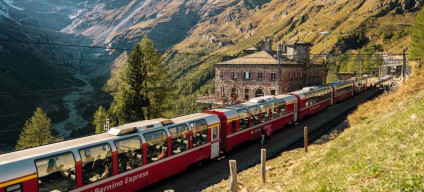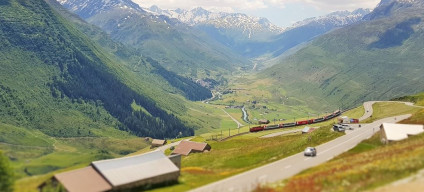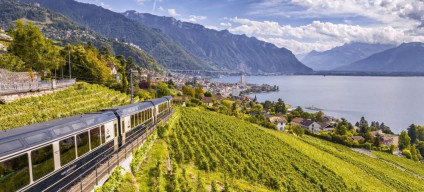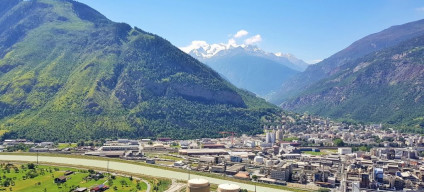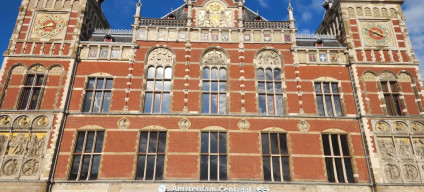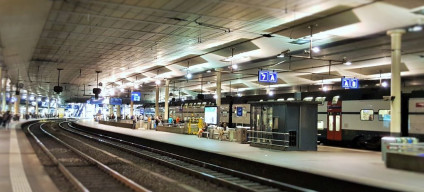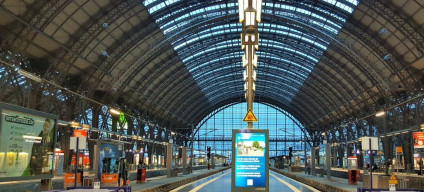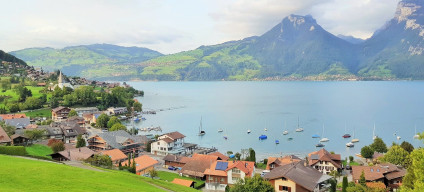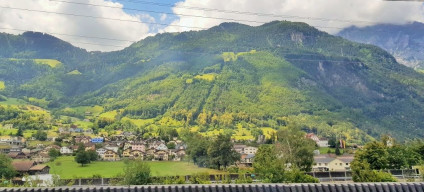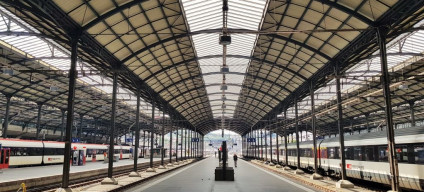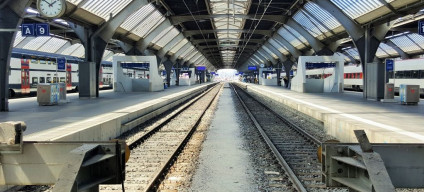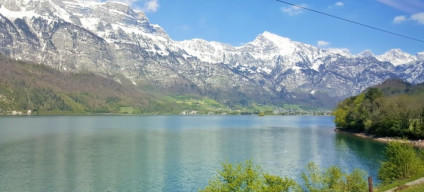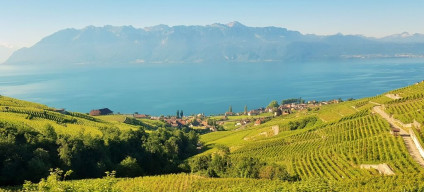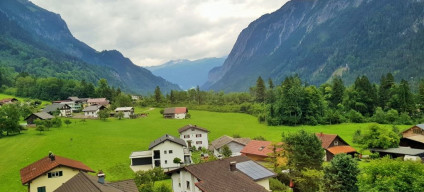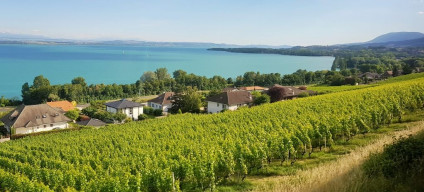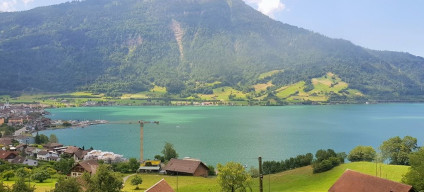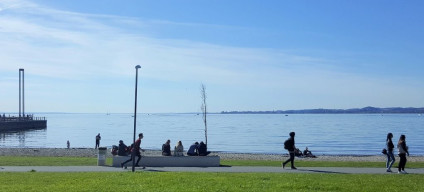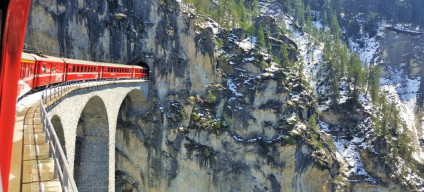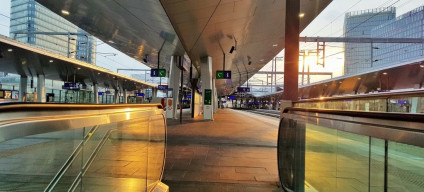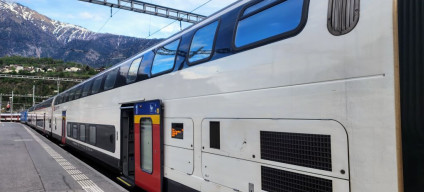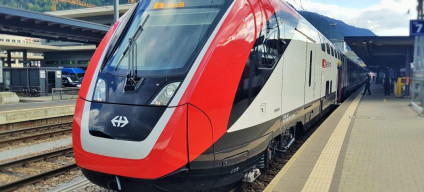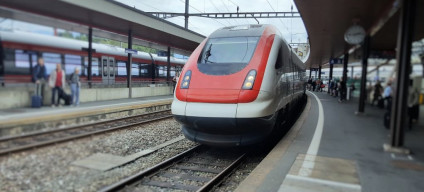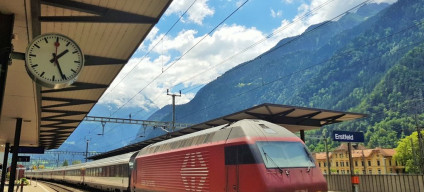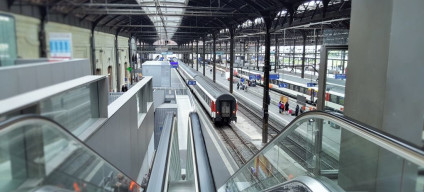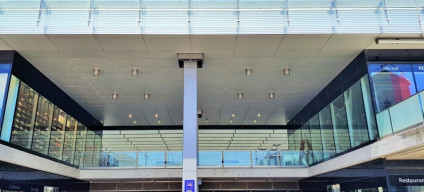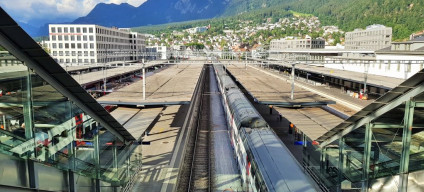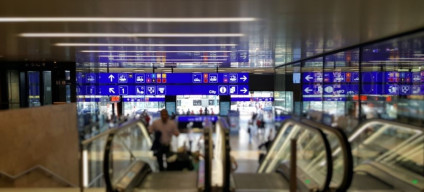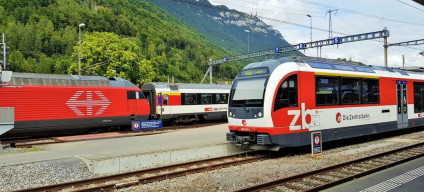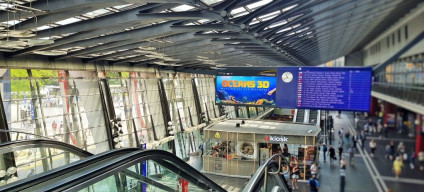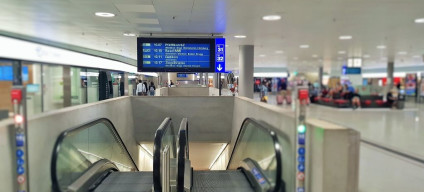Related Content
Content
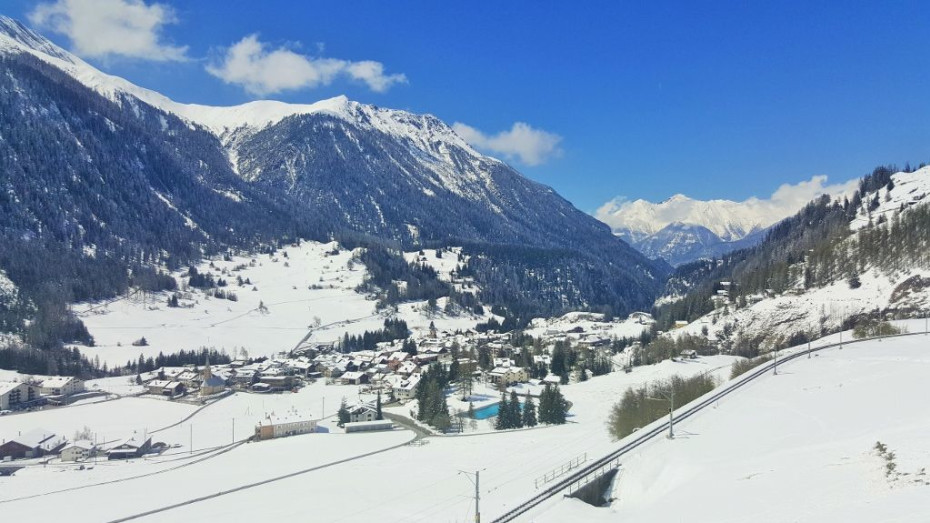
Switzerland by train
Exploring Switzerland by train is inevitably fabulous with a plethora of incredible journeys to be experienced, so this guide provides all the essential info required for Swiss railway adventures!
Share
Introducing Swiss train travel:
Such a high percentage of Swiss residents take a train at least once every year, because it's generally fabulous!
The trains are frequent, famously punctual and the entire rail system is arranged so that making connections between trains is usually as easy as it possibly can be.
Although for a comparatively small country, Switzerland has a fairly high number of quirky aspects to its rail system which can initially be bewildering, hence the info below.
In Partnership with the Switzerland Travel Centre
Links to Useful Info
The 20 Things Most Worth Knowing...
These are the twenty things that are particularly useful to know about rail travel in Switzerland:
- The Swiss rail network is a a combination of two railway systems:
- Standard mainline trains that link its major towns and cities;
- The independent railways, including the routes which ascend up into the mountains - some of which serve the ski resorts.
- Most of the mainline trains are operated by the national rail operator, SBB, but some are operated by BLS, particularly on routes to and from Bern; and SOB now operates some of the longer regional services; Bern - Olten ↔ Chur and Basel / Zurich ↔ Locarno via Göschenen.
- Tickets for travel by the BLS and SOB trains can be booked on the SBB website, at SBB stations and from SBB ticket machines; so when ShowMeTheJourney references SBB tickets, the info also applies to journeys by BLS and SOB trains.
- The only mainline trains on which Seat reservations are available are SBB's express IC trains - but they are optional, so have to be proactively added when booking tickets.
- Tickets for the journeys by SBB's express IC trains are now typically placed on sale up to 6 months ahead of the travel date.
- Discounted tickets are available when booking ahead online for journeys on the express IC trains and other longer-distance mainline journeys.
- Most Swiss rail travellers have Half Fare Cards, so the prices which are initially shown on the SBB website, are what holders of these cards will pay - hence they are 50% of the standard rate.
- Visitors to Switzerland can also purchase Half Fare Cards.
- Tickets for the journeys on the independent mountain railways aren't typically discounted, so cost the same if booked at the last minute at the station - though journeys by the MGB trains and the RhB trains are an exception.
- SBB also sells tickets for end-to-end journeys which involve taking a mainline train + a train managed by one of the mountain railway companies - on the SBB website, at SBB stations and from SBB ticket machines
- A range of rail passes are available which include travel on the mainline trains + the independent mountain railways - travel far enough and they can be much cheaper than using tickets.
- The passes are an alternative to buying and using tickets - you use the pass(es) instead of tickets.
- Some of the independent companies operate comparatively short branch lines, but others operate extensive networks
- The MGB operates the cross-country route across south-west Switzerland; Zermatt - Visp - Brig - Andermatt - Disentis/Mustér
- The MOB operates the western end of the 'Golden Pass' route, Montreux ↔ Zweisimmen;
- The ZB operates the eastern end of the 'Golden Pass' route, Luzern ↔ Interlaken and the Luzern ↔ Engelberg route;
- The Rhaetian Railway (RhB) operates multiple routes between Chur and Arosa, Davos, Disentis/Mustér, St Moritz and Tirano - this latter route is taken by the Bernina Express;
- Special trains, on which seats can be reserved, provide direct services which travel between multiple railways - the Glacier Express travels Zermatt ↔ St Moritz; and the Golden Pass Express travels Montreux ↔ Interlaken.
- The timetables are generally arranged so that the transfer time between the mainline trains and the mountain railway is less than 10 minutes.
- This transfer time of less than 10 minutes also typically applies to connections between the mainline trains - though to facilitate this trains can be timetabled to spend up to 10 minutes at stations during a journey.
- Direct trains aren't available on these popular routes; Geneva ↔ Interlaken; Basel ↔ Geneva ; Basel / Zurich ↔ Montreux and Sion; Geneva ↔ Lugano.
- The core idea is that there will be sufficient time available to make the connections of 10 minutes or less between trains, the timetable planners have factored in a comfortable transit time at a station between trains.
- The express IC trains operated by SBB all convey restaurant cars.
- You don't have to travel on a mountain railway to experience a beautiful journey; these very scenic routes are taken by the mainline trains:
- Zurich ↔ Chur
- Zurich ↔ Schaffhausen
- Zurich ↔ the Gotthard Base Tunnel
- Luzern and Zurich ↔ Locarno via Göschenen
- Thun ↔ The Lotschberg Base Tunnel
- Thun ↔ Interlaken
- Thun ↔ Brig via Kandersteg
- Lausanne ↔ Brig
- Lausanne ↔ Fribourg
Save 20% on the 2025 Swiss Coupon Pass
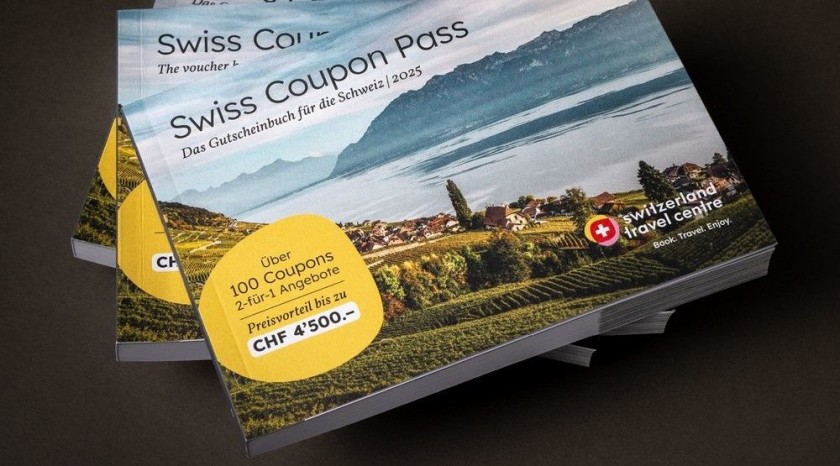
The Switzerland Travel Centre has put together the 2025 Coupon Pass, which is available as a book of paper coupons, or as a digital version which can be stored on a phone - and avoids a shipping charge!
The 2025 Coupon Pass offers 2 for the price of 1 access to more than 100 Swiss experiences including cable cars, gourmet meals, city tours, lake cruises, mountain coasters, museums and water parks.
The 2 for the price of 1 attractions include:
- 30 castles in Switzerland
- the Kunstmuseum in Basel
- a Zurich Card valid for 72 hours which includes public transport, cable cars and free entrance to multiple attractions
- the FIFA Museum in Zurich
- the Swiss Science Centre - Technorama
- the Convent Of St Gall
- a return trip on the Stanserhorn open-top cable car
- the Pilatus Rope Park
- the Albula Railway Museum
- The Sense Gallery
- The Olympic Museum
- the Fort de Chillon
- the Glacier Canyon
Plus a 30% discount for two people on entrance to the Swiss Transport Museum
Plus there are rail travel offers:
- Upgrade to 1st class on The Bernina Express.
- Upgrade to 1st class on the Belle-Epoque and Panorama trains on the Golden Pass route between Montreux and Zweissimen.
- Two for one on a return trip between Montreux and Rochers-De-Naye
- 20% off the Gornergrat Railway from Zermatt!
See inside the pass booklet and you can discover all that's available pre-order.
Save 20% on the purchase price of the 2025 Coupon Pass by using the Promo code AFFSMTJSWISS - Book here.
So when two or more people are exploring Switzerland together you can save twice over:
1 - when you use the coupons
2 - when you purchase the Coupon Pass and enter the Promo code AFFSMTJSWISS
Rail Passes make it cheaper and easier
Making the most of Switzerland's multiple scenic railway journeys and many of its longer cable car routes is made easier thanks to a range of rail passes.
When using them, you typically don't have to know which company is operating the train you will be taking, you just can hop and off.
The connections between the trains and railways make this easy - and thanks to the frequency of the rail services, you can set off from many Swiss stations to explore the entire country by train.
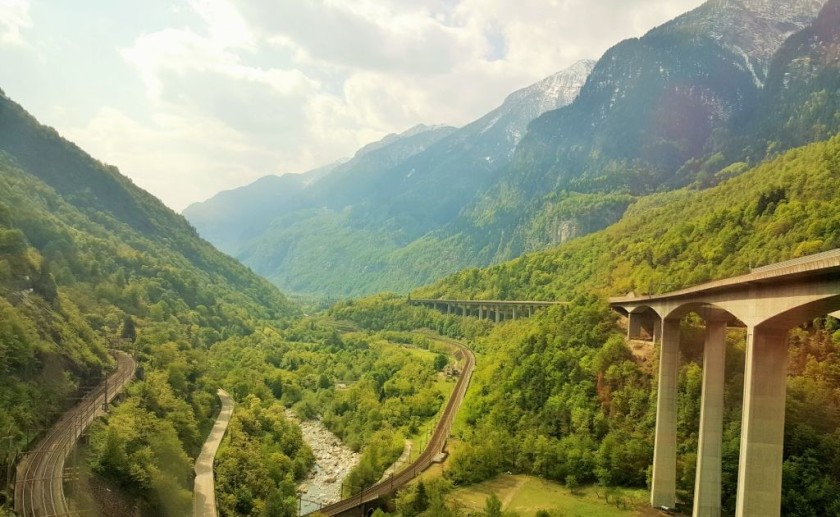
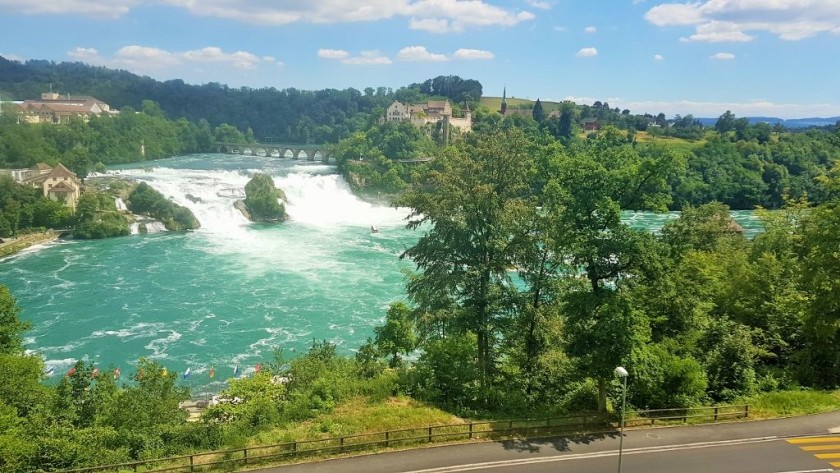
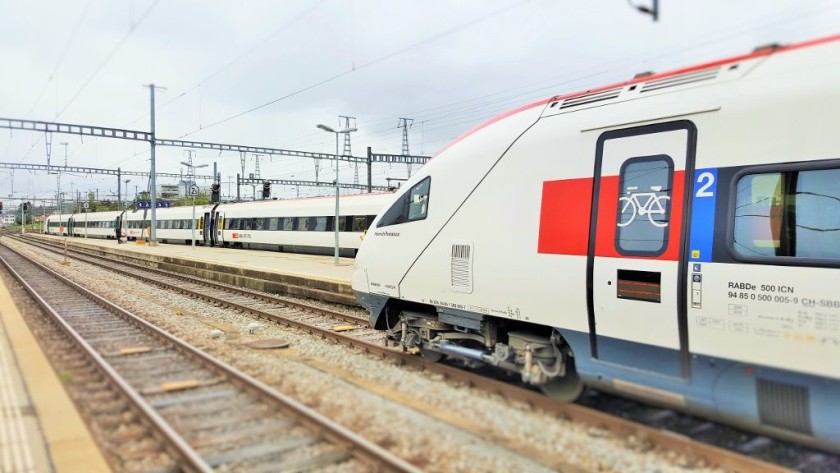
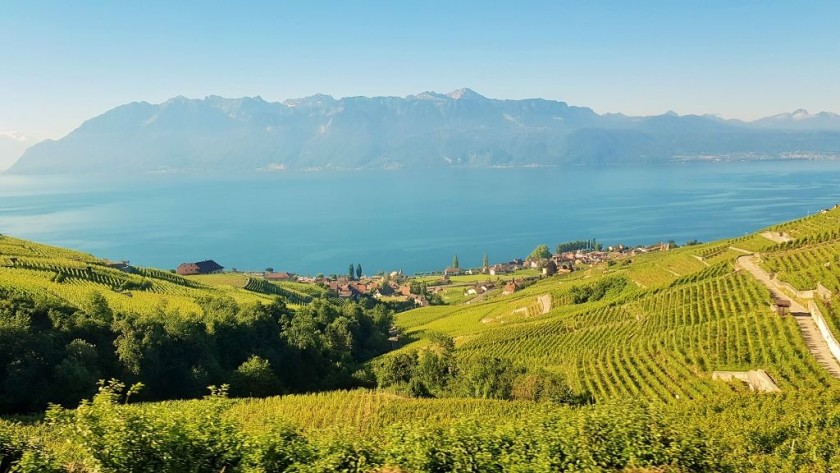
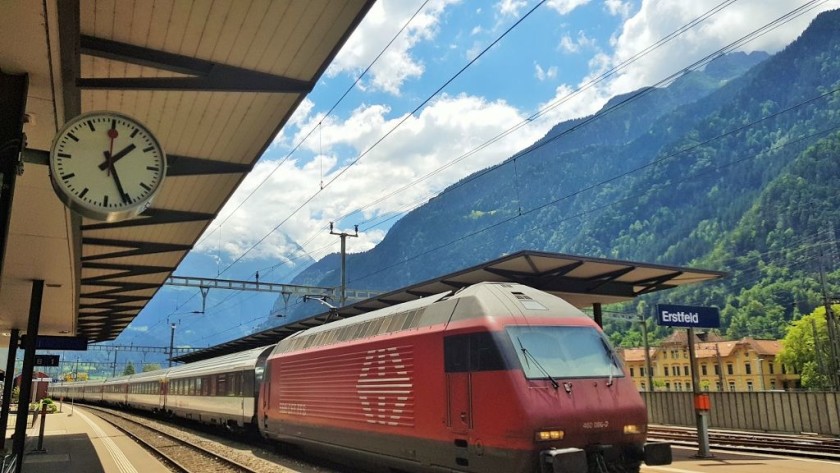
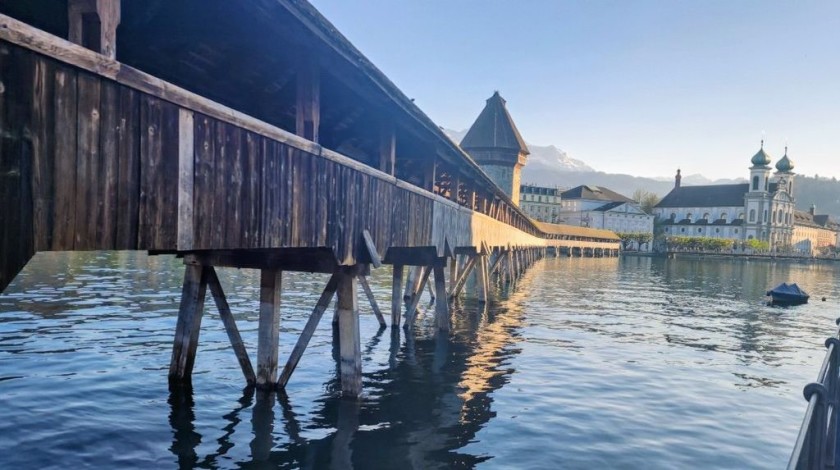
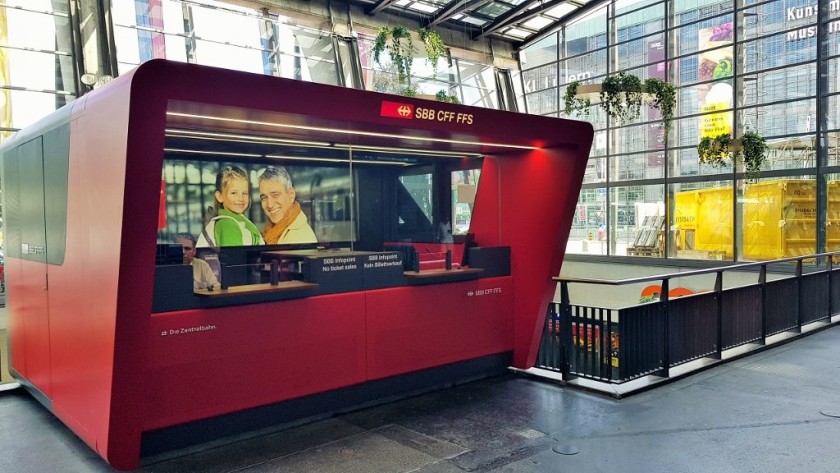
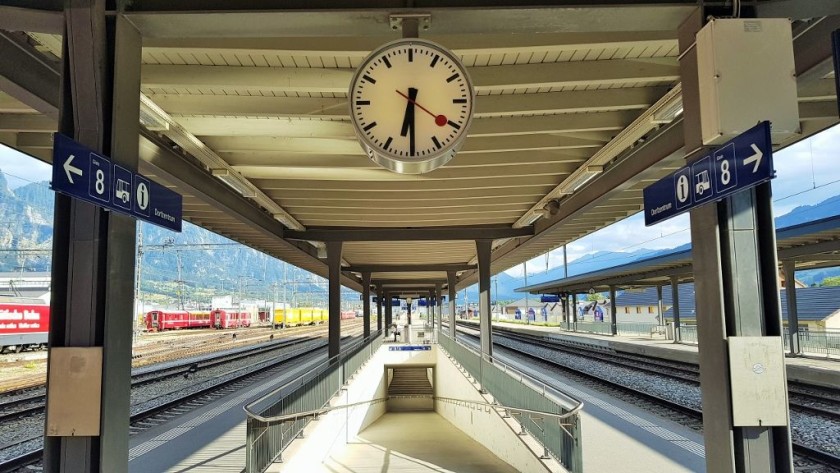
Notes on the ticketing:
Buying tickets for Swiss train journeys is particularly quirky if you're not resident in Switzerland, so if you're new to Swiss train travel, we particularly recommend taking a look at our full guide below.
Amongst other things it explains how visitors to Switzerland can use Half Fare Cards.
Particularly worth knowing is that the SBB website now sells tickets for rail journeys within Switzerland up to six months ahead of the travel date - this is a recent change!
Children aged 6-15 and travelling with a person aged 16 and over, pay 50% of the adult rate per journey
So a good option, if you will travelling long distances in a day on national SBB trains is a '1 Day Travel Pass for Children.
On the SBB trains a day bike pass costs CH 14 and they can be booked online here.
The only other bike ticket available is a short-distance Point-to-Point ticket, which costs half the Adult fare.
If your dog is under 30 cm in height (up to their shoulder blades) and you travel with it in a basket or other suitable container, your dog may travel free of charge as hand luggage.
However, special day passes are required for larger dogs.
The journey prices on the SBB website:
For reasons, that are explained in detail on the full guide that can be accessed below, if you don't have a Swiss Half-Fare Card, you can ignore the prices you will initially see when looking up tickets on the SBB (Swiss national railways) website.
The prices initially shown are always the Half Card rate, so if you don't have one, you will ultimately have to select 'No Discount' which will in effect double the price.
Though SBB has added new functionality, which enables the prices displayed pre-booking to be switched to the 'full fare' rate.
'Supersaver/Sparbilletter tickets:
Limited numbers of discounted 'Supersaver/Sparbilletter' tickets are now available on all of SBB’s express (IC and IR) train routes.
They are also now available for journeys by the MGB trains and the RhB trains.
However, when searching for tickets, they MAY not be available on all departures, so you might have to search through the departures on a particular day to find them.
Whether 'Supersaver' tickets are available on a specific departure, is indicated on the SBB website by the presence of a % symbol on a black triangle.
These 'Supersaver/Sparbilletter' tickets can sell out fastest on the direct trains; so when looking up journeys, these 'Supersaver/Sparbilletter' tickets may be more likely to be available if you’re prepared to change trains.
Saver Day Passes:
If you will be making a long distance day return journey, purchasing a Saver Day Pass can often be a cheaper option than booking tickets for travel in each direction.
When looking up a journey on the SBB website, if the Saver Day Pass is cheaper, it will be offered as the default ticket option.
Though Saver Day Passes need to be booked at least a day ahead of your travel.
A plus of Saver Day Passes is that they also cover the fares on public transport to and from the stations.
Other tickets sold by SBB:
In addition to Supersaver tickets, 'Point-to-Point' tickets are also available and in effect these are the standard, non-discounted tickets; so the price(s) you will see online for Point-to-Point tickets is also the price you will pay when booking last minute at the station.
The two key advantages of booking these more expensive tickets are:
- You can take any train on your travel date, so won't need to be concerned about making the specific departure you have booked in time.
- They can be upgraded, for an additional cost, so that they are also valid on the public transport networks of the cities in which you will be starting and/or ending a journey.
Limited numbers of discounted tickets are also made available on all long distance express trains from and to Switzerland, so you can make savings if you book ahead; though SBB discontinued its long standing 'Swiss Transfer tickets at the close of 2018.
The most scenic routes:
SMTJ has produced a guide to travelling on the most beautiful routes in Switzerland which we have been lucky enough to experience.
- St Moritz ↔ Tirano
- Andermatt ↔ Disentis/Muster
- Grindelwald > Kleine Scheidegg > Lauterbrunnen
- Chur ↔ St Moritz
- Zug > Arth-Goldau > Goschenen > Airolo > Bellinzona
- Alpnachstad ↔ Pilatus Kulm
- Vitznau ↔ Rigi-Kulm
- Zermatt ↔ Gornergrrat
- Brig > Kandersteg > Thun
- Montreux ↔ Zweisimmen
plus another ten journeys, to make a Top 20.
Though despite multiple Swiss rail adventures, ShowMeTheJourney has yet to experience all of the best routes that can be taken by train in Switzerland, so in time it's likely that this will be become more than a Top 20 list of the country's Most Beautiful Train Journeys.
More than 80 videos showcasing the beauty of Swiss train travel have been made available on the ShowMeTheJourney channel on YouTube.
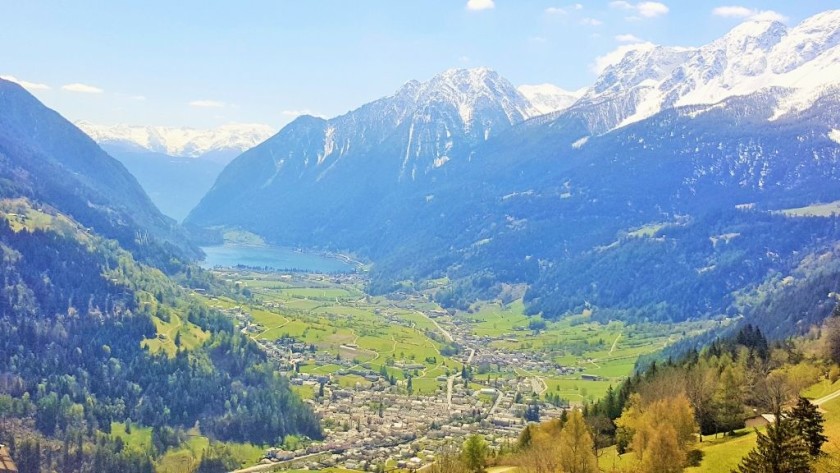
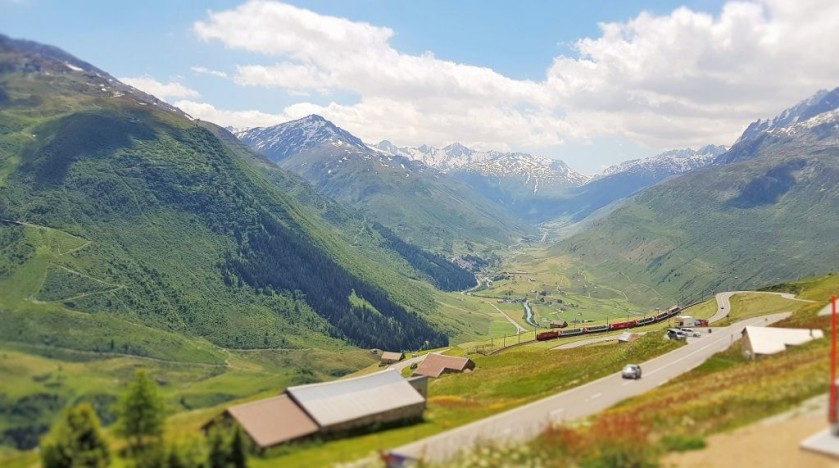
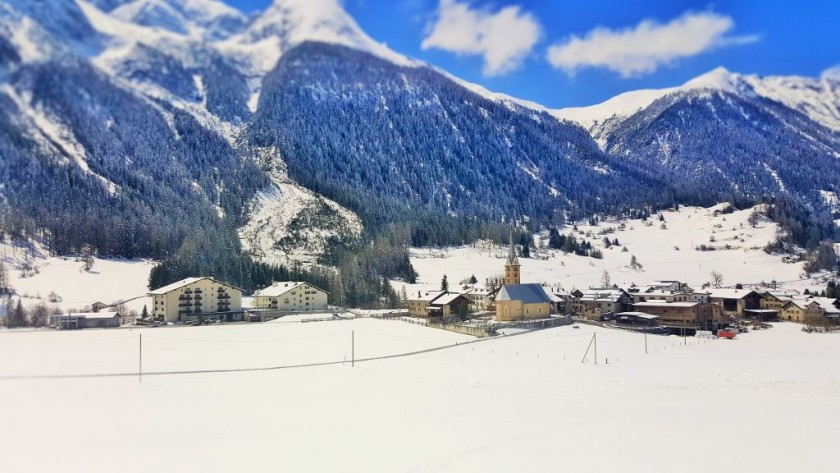
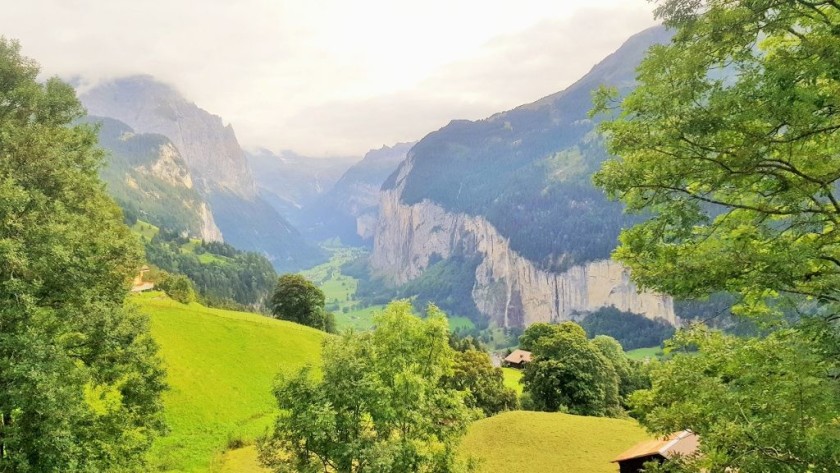
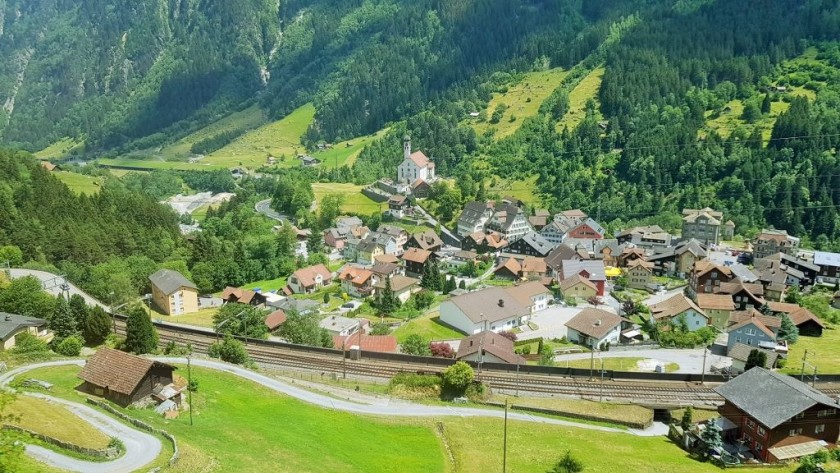
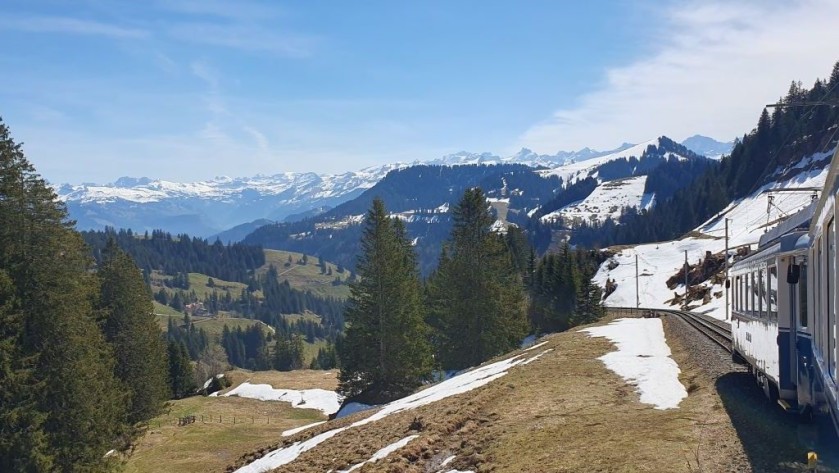
Taking the scenic trains
Ride any of these trains and you can experience one of the greatest European rail journeys
How the timetable works:
Trains usually operate to a regular ‘clock face’ timetable with hourly trains operating on most express train routes; though on some routes the service only operates every other hour.
So to facilitate an hourly service between destinations on some routes, in hours when there is no direct train service, connections between trains are built into the national timetable.
Connections between trains are designed so that the waiting time between trains across Switzerland is less than 10 minutes; and the private railways also usually follow this pattern.
Trains in Switzerland are VERY rarely more than 5 minutes late, so connections are usually guaranteed.
Though to ensure connections, trains can often spend up to 10 minutes waiting at stations and still depart on time.
International daytime trains to and from Switzerland also fit into this regular timetable, when travelling between destinations in Switzerland.
For example, some of the hourly trains between Basel and Interlaken are ICE trains, which have travelled from Germany, and not SBB’s regular IC trains.
Choosing a location in Switzerland
How to choose your optimum location for exploring Switzerland by train.
Journeys from Basel
The journey guides include access to booking links and information about the trains, tickets and destination stations. Plus for the scenic routes there are insights on how to make the most of the rides on the trains.
Journeys from Zurich
The journey guides include access to booking links and information about the trains, tickets and destination stations. Plus for the scenic routes there are insights on how to make the most of the rides on the trains.
To the ski slopes and other mountains
Make your Swiss train travel dreams a reality
Travelling on SBB's trains:
SBB's express trains fall into two categories:
(1) The IC Train Services:
Aside from speed, the key distinguishing feature of these trains is that they convey restaurant cars.
Most IC train services are double-deck, but some are single deck; at busy times of the day additional single deck coaches can be attached to the double deck trains..
New and shiny double deck IC trains are now available on some routes.
The older double deck trains were beginning to show their age, hence newly modernsied coaches are now being introduced.
The tilting ICN trains are still in service, but are now also branded as IC services; and they are also being refreshed.
(2) The IR train services:
Different types of services are designated IR (InterRegio).
On the Geneve – Sion – Brig route they are the fastest trains and are no different to the single and double deck IC trains; except for the fact that they don’t convey restaurant cars.
On some routes the IR services are slower than IC services, but the standard ticket price won't be any cheaper.
Some IR trains convey 1st class observation cars in which ordinary 1st class tickets are valid.
Also some IR services are operated by BLS or SOB.
The IC route numbers:
SBB has introduced route numbers for its IC and IR services - see the SBB IC/IR Trains route map in the links section above.
The IC train routes are now numbered as follows:
- IC 1 = St Gallen - Winterthur - Zurich Flughafen (airport) - Zurich HB (main station) - Bern - Fribourg - Lausanne - Geneve - Aeroport
- IC 2 = Zurich HB - Zug - Arth Goldau - Bellinzona - Lugano
- IC 3 = Basel - Zurich HB - Landquart - Chur
- IC 4 = Zurich HB - Schaffhausen
- IC 5 = Rorsach - St Gallen - Winterthur - Zurich Flughafen - Zurich HB - Olten - Biel/Bienne - Neuchatel - Renens VD - Lausanne
- IC 6 = Basel - Olten - Bern - Thun - Spiez - Visp - Brig
- IC 8 = Romanshorn - Winterthur - Zurich Flughafen - Zurich HB - Bern - Thun - Spiez - Visp - Brig
- IC 21 = Basel - Luzern - Arth Goldau - Bellinzona - Lugano
- IC 51 = Basel - Delémont - Moutiers - Biel/Bienne
- IC 61 = Basel - Olten - Bern - Thun - Spiez - Interlaken Ost - Interlaken West
the lack of conventional Wi-Fi.
Swiss national rail operator SBB does not provide wi-fi on its trains in the conventional sense; meaning that passengers can't log on to a SBB portal for wi-fi.
Instead SBB has equipped its IC trains and most IR trains with signal amplifiers to enable enhanced connectivity with local mobile networks.
The coaches/cars equipped with this equipment have symbols by the doors - and SBB suggests that passengers who wish to access wi-fi during a journey, should travel in these coaches in order to access these 'hotspots'.
Also worth knowing
- A yellow band above the doors indicates that a coach is 1st class.
- For journeys within Switzerland, international trains have the same terms and conditions as Swiss trains. Meaning that reservations aren't compulsory for journeys WITHIN Switzerland by Lyria trans, or on the EC trains which have travelled to and from Italy.
- Passport checks can be carried out on board international trains to/from Switzerland.
Travellers are singled out apparently randomly, so don't be offended if the customs staff ask to see your passport, but ignore your fellow passengers.
Keep your passport in your hand luggage.
Detailed train guides
Click on the buttons below to access info such as on board facilities, and what to look out for when boarding and travelling with luggage/bikes.
Good to know about stations:
In Switzerland ticket inspections are carried out on the trains, so there is no need for stations to have barriers, or gate-lines.
As a result the stations are open to the surrounding streets with multiple access points - so what's unusual is that you usually don't have to pass through station buildings in order to access the trains, or to transfer between buses and trains.
However, normally the short-cuts into the station can only be used if you already have a valid ticket.
If you need to buy a ticket look out for the ticket symbols on any signs that you see; the ticket desks and machines may not be in what looks like a main station building.
Often they're in the passage way beneath the tracks or are housed in the middle of a station.
The access to and from the trains
Elevators and particularly escalators can be rare at Swiss stations - especially in the middle of the platform/track (gleis/voie).
Instead step free access is provided by slopes that connect the platform / track / gleis / voie to passage ways which are located beneath the railway tracks.
So if you have luggage etc there is always an alternative to using the stairs.
The core departure info
At most stations the platforms/tracks/gleis/voies are used by multiple train departures per hour.
So wait for your train where you can see the electronic displays which show the details of the next train to leave.
Also keep the departure time front of mind.
It's not unusual for SBB express trains to be timetabled so that they spend up to 10 mins at a station between arrival and departure.
So you often don't have to rush and board by the first door you see; even though most people do.
But if you use the time to move further along the train you can have a greater chance of finding spare seats etc.
Finding your train:
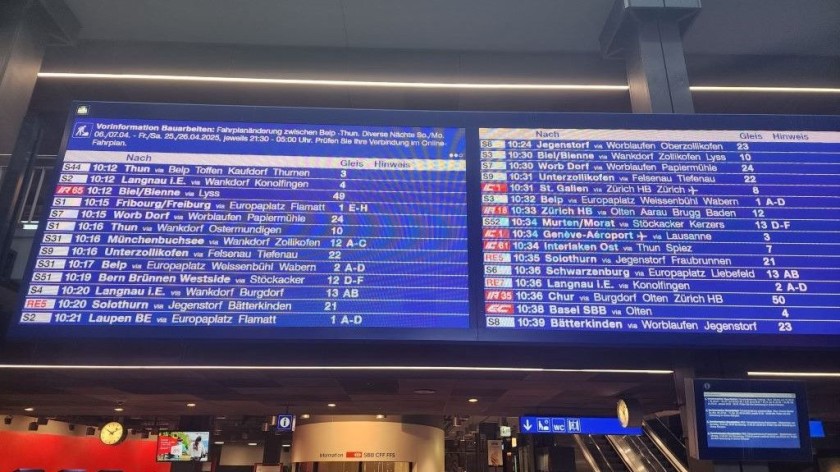
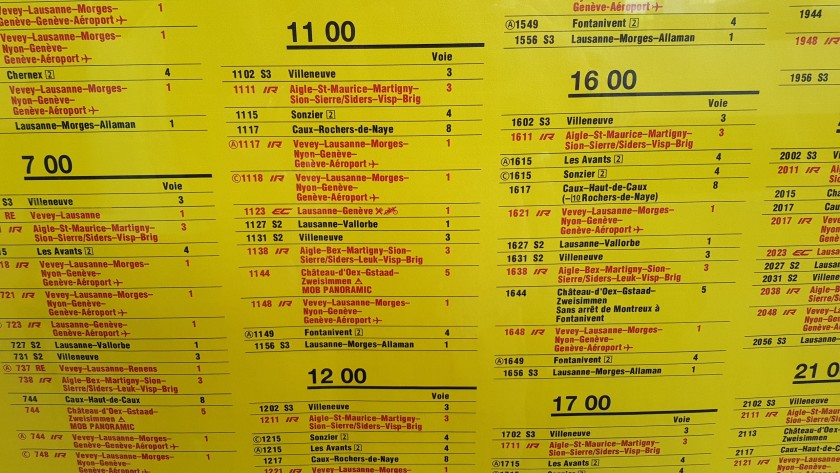
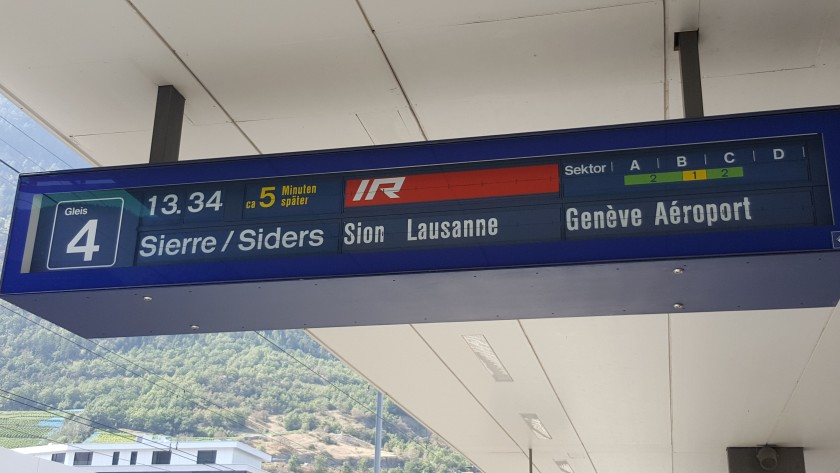
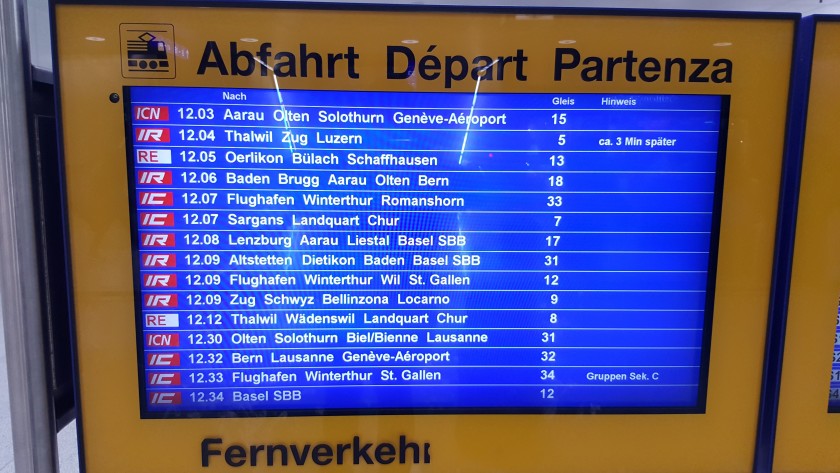
At Swiss stations the older type of electronic departure screens, the paper timetable posters and the station announcements all normally DON'T include every station that a train will be calling at.
Sometimes only the next two or three stations that a train will be calling at are shown on the electronic indicators, along with the final destination of the train.
SBB also doesn’t use a system of train numbers on its information indicators or tickets, so being aware of the final destination of your train can help save time and confusion – hence we have striven to include it on our journey guides.
If you’re not sure what train you need to board check at the information desk or ticket office.
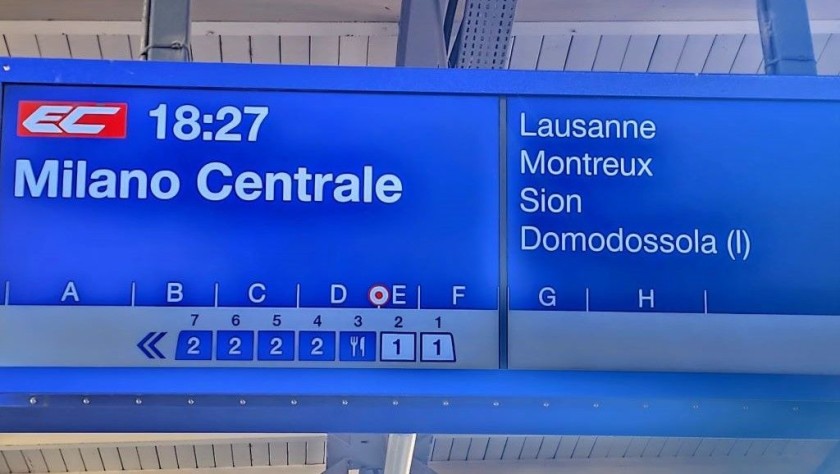
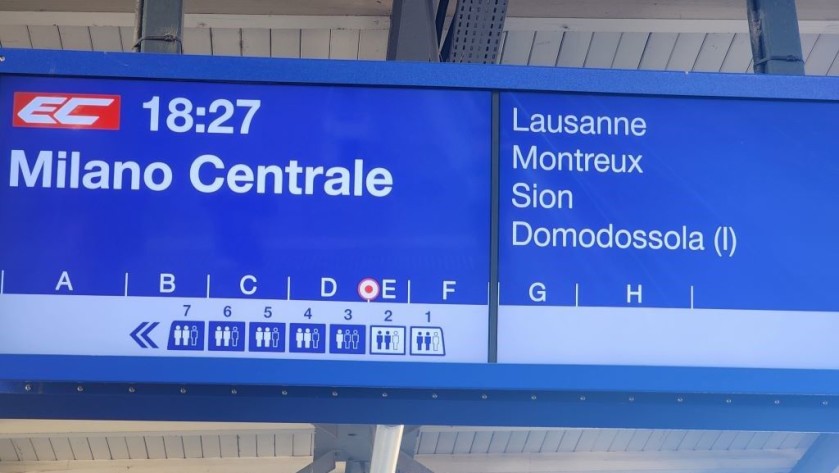
Using the train departure indicators
At the main stations there are electronic indicators on the platforms/tracks, which indicate in which zone of the platform the 1st class, 2nd class and restaurant car coaches will be located, when the train arrives; a bear symbol indicates the family zone
Though the info is rotated, so that it also shows how busy each part of the train is likely to be.
They new screens are now being introduced, which do also show the zones on the gleis (platforms/tracks), in which each specific coach of a train can be found.
Making connections
If you will be changing trains at larger stations, seek out, what can be hard to find, paper departure posters that you can find on the platform.
They list all train departures in consecutive order so you can use then to check which platform / track / gleis / voie, your onward connection will be leaving from.
If you're in luck you'll be able to remain on the same platform you have just arrived at.
Also when looking up and booking tickets for the many indirect Swiss journeys, the connections between trains will typically be around 10 minutes.
This won't be an issue, as the timetable takes into account the time it will take to make a transit from one platform / track / gleis / voie, to another.
The signage directing travellers is comparatively easy to follow and making the connection will typically take 1 or 2 minutes, though allow around 5 minutes at larger stations such as Bern and Zurich HB.
Making connections will typically be easier if you don't board into the rear of the trains - the routes to the other platforms and tracks tend to be in the middle of the platforms.
At Zurich HB its mainly easier to make connections from the front of the train - Except when arriving at the long-distance underground platforms / tracks on trains from destinations to the north of the city, including Munich, St Gallen and Winterthur, when the easiest connections will be from the rear of the trains.
Storing and sending luggage:
The larger stations will have coin and card operated left luggage lockers, which can be accessed at any time.
When depositing bags you must pay for an initial 24 hours - even if you will be only depositing a bag for a couple of hours.
Then on collection you pay the balance - the charge will rise per day, but keep in mind that you may have pay in excess of 20 francs in coins, though lockers which accept cards are now being installed.
Change machines are usually available, though at the larger stations, with lockers in multiple locations, only one location can have a change machine
If you are going to be touring Switzerland then you can forward your luggage between stations, you don't have to take it on the trains.
This can be a particularly useful service if you will be entering and leaving Switzerland at different locations.
These luggage desks tend to be in a different part of a station to a left luggage office - it's easy to confuse the two.
International rail journeys
Other sources of info:
The Swiss Travel System website is a great source of both practical info and inspirational articles.
This second version of ShowMeTheJourney is exciting and new, so we are genuinely thrilled that you are here and reading this, but we also need your help.
We’re striving not to let anything get in the way of providing the most useful service possible, hence a facility has been set up with DonorBox which can be used to support the running costs and make improvements.
Instead of advertising or paywalls, your financial support will make a positive difference to delivering an enhanced service, as there’s a lot of ideas which we want to make happen.
So if you have found the info provided here to be useful, please consider saying thank you.

This is one of more than 100 train travel guides available on ShowMeTheJourney, which will make it easier to take the train journeys you want or need to make. As always, all images were captured on trips taken by ShowMeTheJourney.






